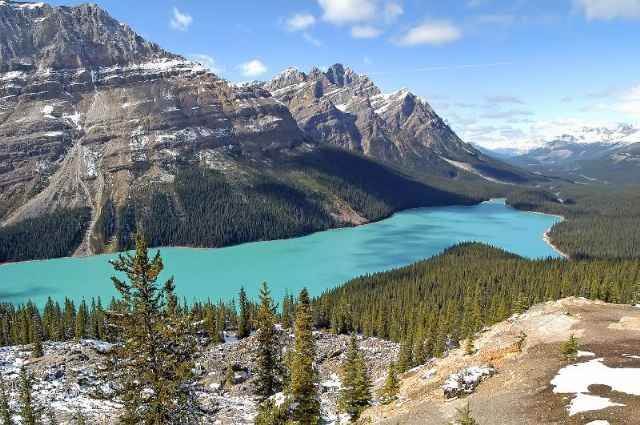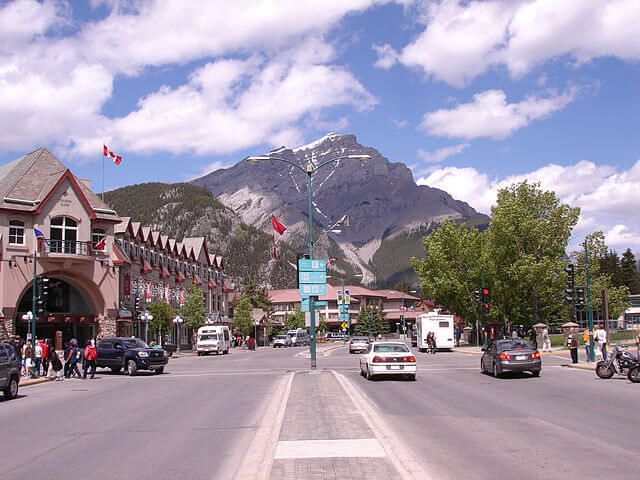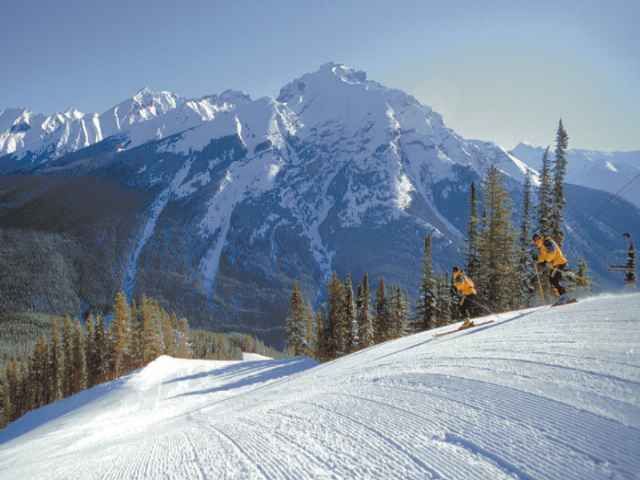Banff National Park
Thousands of visitors each year make the journey to Banff National Park, the first national park in Canada and the world’s third, covering 6,641 square kilometres or 2,564 square miSkiing at Lake Louise – Banff Accommodationsles, of valley, wild life, glaciers, rivers, Rocky Mountains, meadows and forests. What we know today as Banff, was discovered over 100 years ago by the Canadian Pacific Railway workers, while building the transcontinental Canadian railway. Now, visitors come to enjoy the rugged wilderness and such activities as hiking, fishing, horseback riding, cycling, rock climbing, boating and soaking in hot springs, and one of the world’s premier destination spots.
Banff is a bustling international destination year round, as avid skiers return year after year to some of the best downhill skiing in the world at Mystic Ridge/Norquay, Skiing Louise, and . Sunshine Village ski areas.
There are two ways to enter the park, which covers 6,641 square kilometres. From the east/west via the TransCanada Highway (Hwy. l) or from the north and south via Hwy. 93 which connects with Hwy. 1. There are two exits off the Trans-Canada into the town of Banff. Driving between Banff and Lake Louise, you can also take the Bow Valley Parkway (Hwy. lA);although this route is somewhat slower, it offers good scenery and a greater possibility of seeing wildlife.
While in Banff, you can shop for fine leather goods, jewellery, ceramics and beautiful clothing; dine in a wide variety of restaurants, golf at the Banff Springs Golf Course; cycle (rental bikes are available); ride horseback; see the Rockies from a helicopter; take a float or white-water rafting trip along the Bow River; visit museums and art galleries; and hike along any of 1,000 kilometres of trails.
If you would rather watch scenery than traffic, motor coach tours operate from Banff all the way up to Jasper and points in between!
You may enjoy a trip to Tunnel Mountain. Entering Banff on the eastern exit from Hwy. 1, watch for the sign to Tunnel Mtn. Road just a short distance from the highway. From there, the route winds around the back of Tunnel Mtn. past viewpoints, campgrounds and picnic sites to the hoodoos which are strangely shaped pillars of glacial silt and clay, sculpted by years of wind and erosion.
Nearby is the famous Upper Hot Springs. Soaking in this open-air pool with its thermally heated 102-degree waters, overlooking the Banff valley, is the perfect way to unwind after an active day.
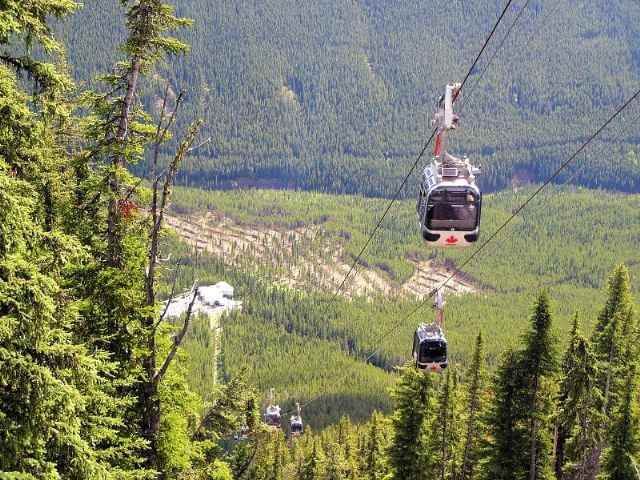
Along the road to Lake Minnewanka from Banff, you can enjoy a little historical experience. The town of Bankhead existed here for 20 years as a coal-mining community. A decrease in the use of coal combined with labour strikes and new Canadian National Parks policies and ideals led to the town being completely shut down, and all the buildings removed. The site is now an interpretive area, with trails among the crumbling foundations; photos and informative signboards help bring the town back to life in your imagination.
Along Hwy. lA to Lake Louise is Johnston Canyon with its cascading waterfalls, the Ink Pots (a group of 7 cold water springs nestled in an open meadow beyond the canyon) and the funny little water ouzel, a comical bird that dives, swims and even walks under water!
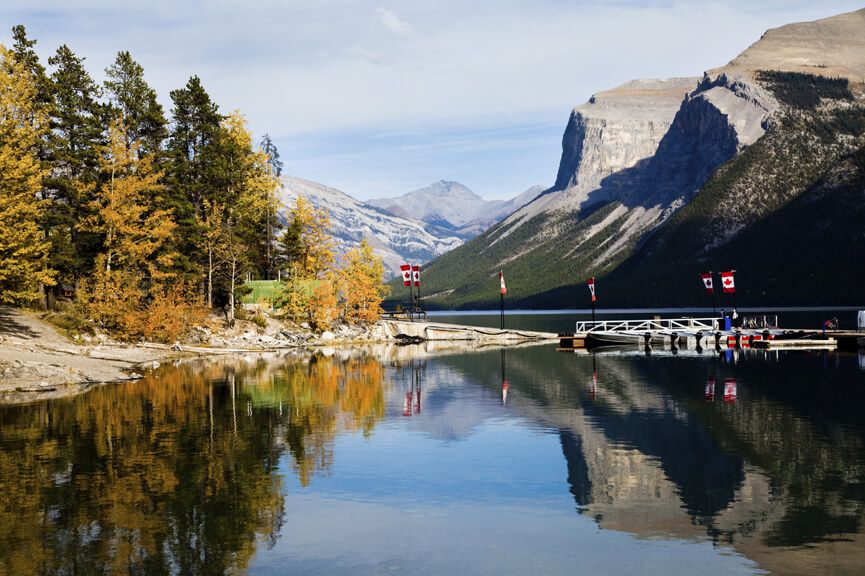
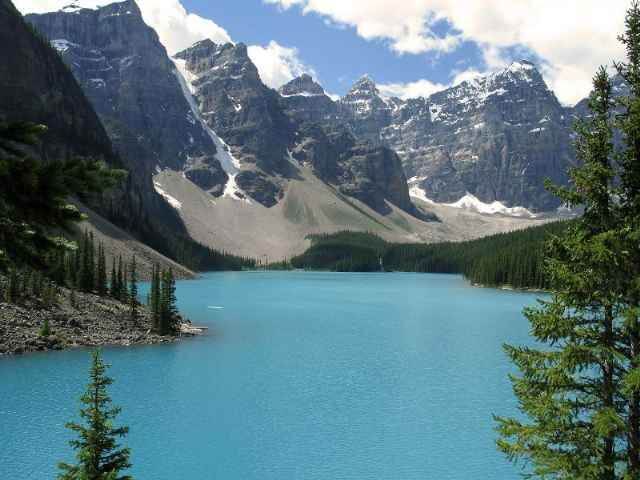
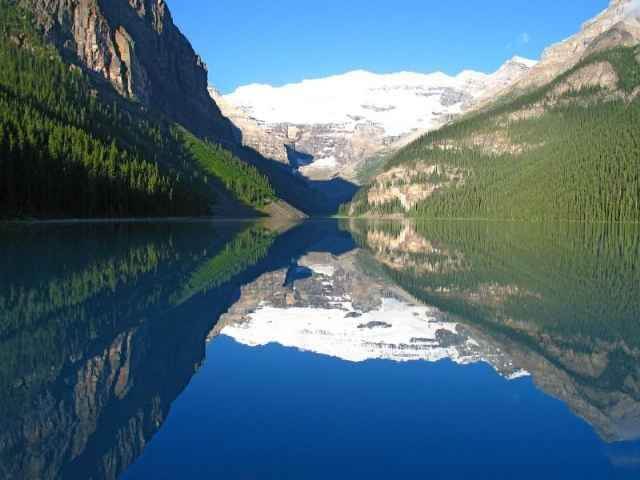

Drives to more remote sites are worth the extra time and kilometres. These include Takkakaw Falls and Emerald Lake, west on Hwy. 1 near the charming town of Field, British Columbia. Emerald Lake is a beautiful place to enjoy cross-country skiing in the winter as well.
Hiking trails at Sunshine VillageBanff National Park is a wonderful place to visit any time of year, but for many people, the “shoulder seasons” – spring and fall are the best time of all. The crowds are fewer, price value is exceptional, and the weather is often ideal; the colors of flowers budding in spring or trees turning from green to amber in the autumn are a photographer’s dream when set against the mountain backdrop.
Walk among the magenta fireweed of Banff National Park’s trails, dip your paddle into emerald green lakes, gaze up at snow-capped peaks and say a silent “thank you” to those who had the foresight to preserve this exquisite wilderness.
